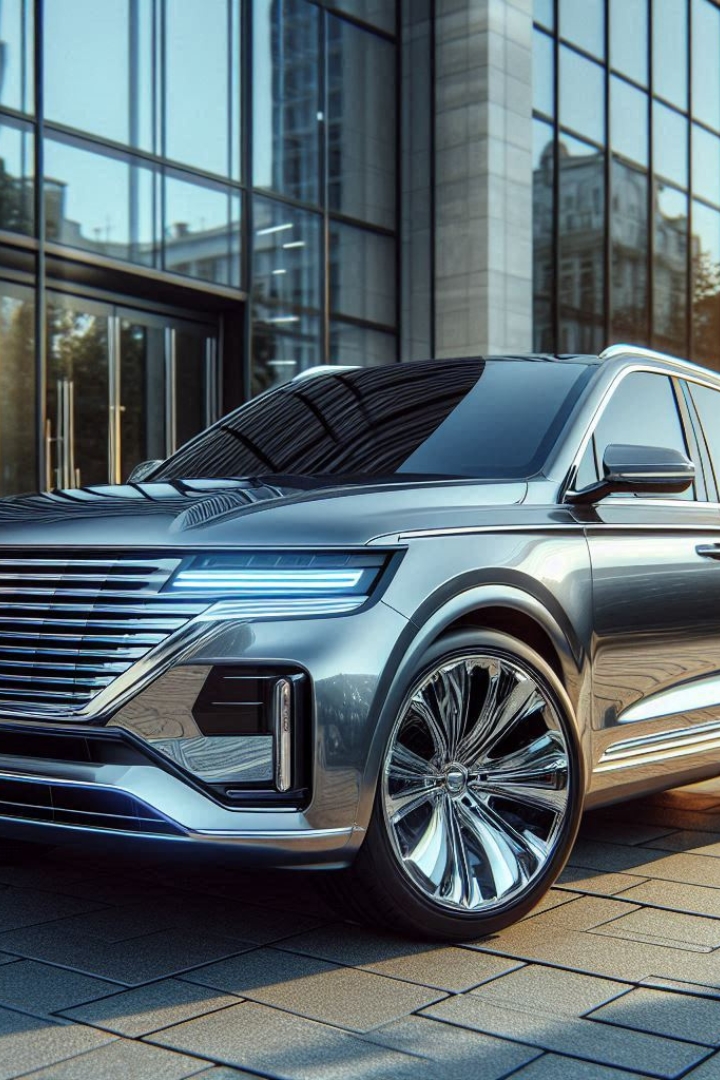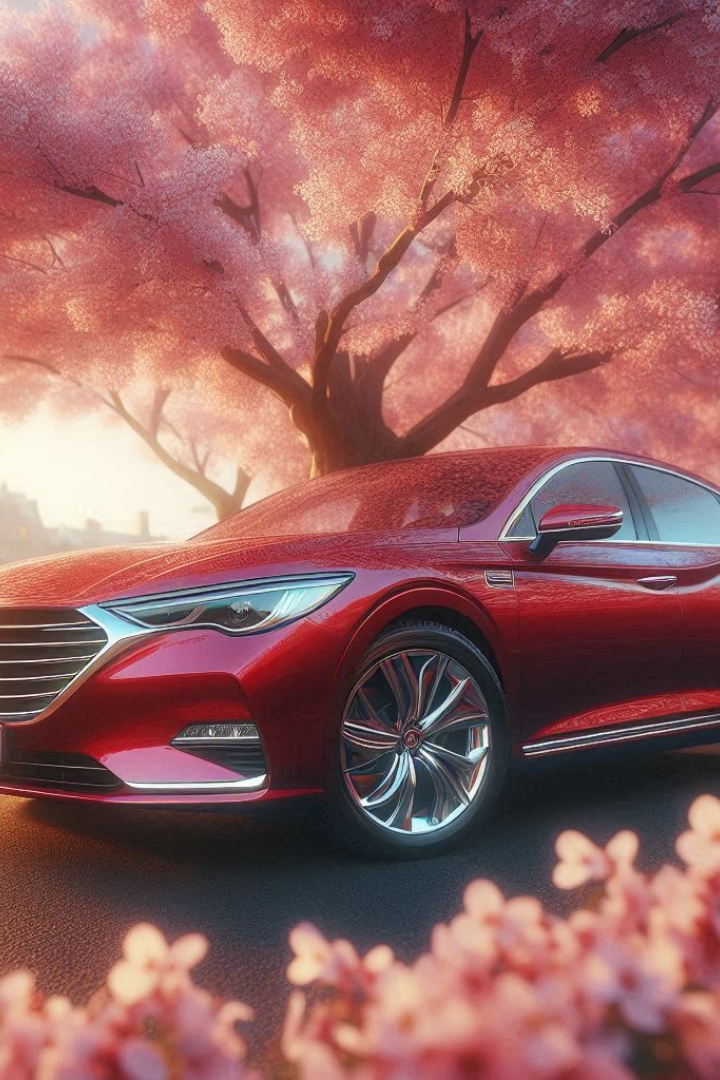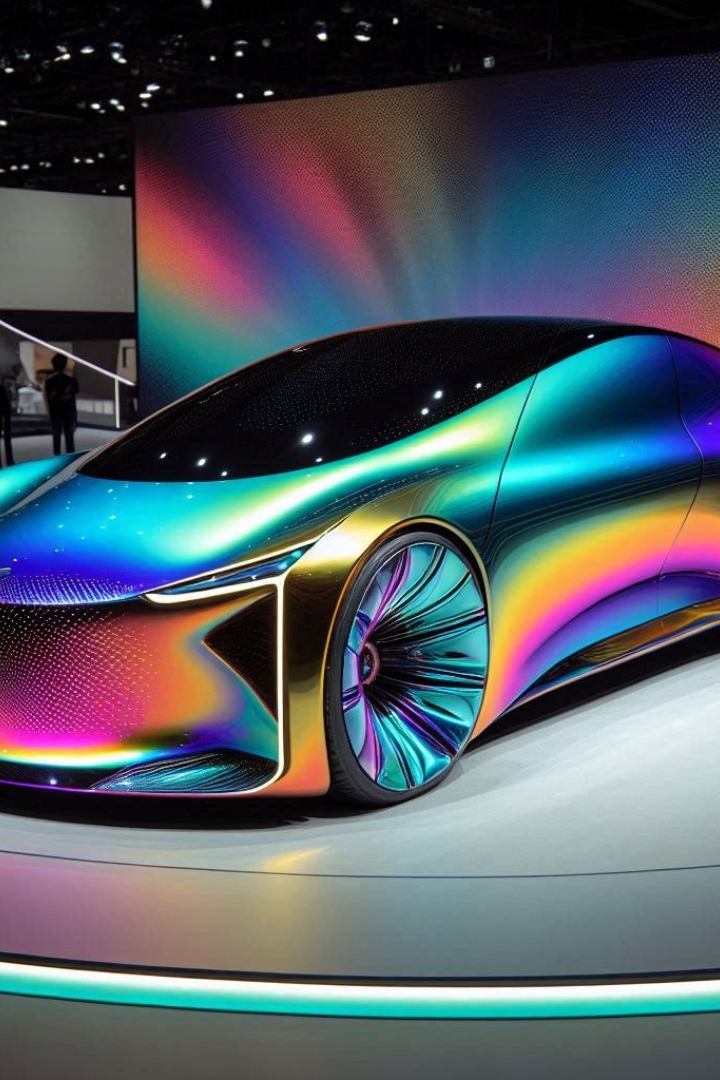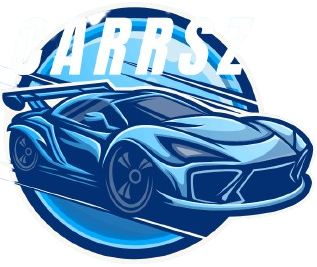The Evolution and Impact of Passenger Cars: A Comprehensive Overview 06
Table of Contents
Voyager vehicles have by and large formed current culture, reflecting movements in development, plan, and environmental mindfulness. From the outset of the vehicle to the present refined electric vehicles, the trip of voyager vehicles is an exhibit of human imagination and flexibility. This article researches the turn of events, impact, and possible destiny of voyager vehicles, extending to a point by point explore their employment opportunity in changing transportation and society.
Historical Evolution
1. The Presentation of the Auto: The possibility of a self-pushed vehicle follows as far as possible back to the eighteenth 100 years, but it wasn’t long after the late nineteenth century that the state of the art explorer vehicle worked out as expected. Karl’s Benz Patent-Motorwagen, introduced in 1885, is as a rule credited as the essential certifiable vehicle. It featured a gas controlled engine and is seen as a leading model in auto history.
2. The Mechanical creation framework Revolt: The mid 20th century indicated an enormous pivotal occasion with Henry Entry’s show of the mechanical creation framework. Section’s Model T, shipped off in 1908, changed vehicle creating by making cars sensible to the greater part. This advancement democratized vehicle ownership as well as cleared a path for huge scope fabricating systems that are as yet being utilized today.
3. Post-War Headways: After The Subsequent Incredible Conflict, the vehicle business experienced speedy turn of events and expanding. The 1950s and 1960s saw the ascent of famous plans and execution models, as well as movements in security and comfort features. The introduction of seat straps, airbags, and further created crash testing standards became essential in updating vehicle security.
4. The Climb of Eco-agreeableness and Surges Control: The 1970s oil crisis goaded an accentuation on eco-cordiality and regular impact. State run organizations generally speaking began executing stricter releases rules, provoking the headway of extra eco-accommodating engines and elective fuel passenger cars. The 1980s and 1990s saw the introduction of exhaust frameworks, fuel imbuement structures, and blend passenger cars.

Technological Advancements
1. The Mechanized Time frame: The late 20th and mid 21st many years have seen a high level change in the auto business. Momentum voyager vehicles are furnished with state of the art equipment, infotainment structures, and driver-help progressions. Components, for instance, GPS course, adaptable excursion control, and way keeping assist with having become standard, working on both solace and prosperity.
2. Destroy: Maybe of the primary example of late is the shift towards electric vehicles (EVs). With stresses over natural change and air quality, automakers are dynamically placing assets into EV advancement. Tesla, Nissan, and various producers have introduced models that offer critical reach and execution, while state run organizations all around the planet offer inspirations to help EV gathering.
3. Autonomous Vehicles: Self-driving development tends to the accompanying edges in vehicle headway. Associations like Waymo and Excursion are making free passenger cars that utilization a blend of sensors, cameras, and modernized thinking to investigate roads without human intervention. While totally free passenger cars are still in the testing stage, they promise to change transportation by diminishing disasters and further creating traffic stream.
Effect on Society
1. Money related Responsibilities: The vehicle business is a huge monetary driver, giving extraordinary many positions generally in collecting, arrangements, and backing. It maintains a massive association of suppliers and expert centers, contributing basically to overall economies.
2. Metropolitan Development: Voyager vehicles have impacted metropolitan arrangement and improvement, inciting the advancement of provincial regions and the creation of establishment like highways and leaving workplaces. While this has worked with versatility and advancement, it has moreover added to gridlock and biological hardships.
3. Environmental Concerns: The regular impact of explorer vehicles, particularly those with internal combustion engines, has been a creating concern. Surges from ordinary passenger cars add to air defilement and natural change. This has provoked extended revolve around doable practices, for instance, the progression of cleaner powers and the headway of electric and cross variety passenger cars.
The Future of Passenger Cars
The possible destiny of explorer passenger cars is prepared for extra change with continued with movements in advancement and a creating highlight on practicality. Key locales to watch include:
1. Free Driving: As self-driving advancement creates, it is ordinary to reexamine transportation components, perhaps diminishing vehicle crashes, propelling traffic stream, and offering new transportability plans.
2. Electric and Hydrogen Vehicles: The shift towards electric and hydrogen-filled vehicles is most likely going to accelerate, driven by nonstop movements in battery development and a push for zero-release transportation.
3. Network and Splendid Components: The blend of vehicles with insightful advances and the Trap of Things (IoT) will update vehicle-to-vehicle (V2V) and vehicle-to-structure (V2I) correspondence, provoking more adroit and more viable transportation systems.
Technological Advancements
As the 20th century progressed, voyager vehicles went through different creative degrees of progress. The introduction of electric starters, modified transmissions, and cooling made driving more accommodating and enchanting. Security features, for instance, seat straps, airbags, and non-freezing halting components (ABS) became standard, on a very basic level further creating driver and voyager prosperity.
***The last choice piece of the 20th hundred years and the mid 21st century saw the rising of electronic progressions in vehicles. Momentum passenger cars are equipped with state of the art driver-help structures (ADAS), which consolidate features like flexible journey control, way keeping help, and customized emergency dialing back. These headways are planned to redesign security, decline driver weariness, and work on all around driving experience.

Natural Examinations
The natural impact of voyager vehicles has transformed into a basic concern in continuous numerous years. Usually constrained by non-sustainable power sources, vehicles add to air defilement and ozone exhausting substance outpourings. Likewise, there has been a creating development towards elective energy sources. Cross variety vehicles, which solidify traditional internal combustion engines with electric drive, offer unrivaled eco-benevolence and lessened outpourings.
**The most striking improvement in this space is the rising of electric vehicles (EVs). Associations like Tesla have supported EVs, showing the way that electric vehicles can convey execution, reach, and solace like their fuel accomplices. State run organizations generally are in like manner supporting this advancement through inspirations, enrichments, and stricter release rules.
Cultural Impact of Passenger Cars
Voyager vehicles have fundamentally impacted standard society and social norms. The vehicle business has formed lifestyles as well as transformed into a badge of individual adaptability and status.
Vehicles in Standard society
From films to music, vehicles have been outstanding pictures in standard society. Films like Entry v Ferrari, The Fast and the Furious series, and Back to the Future component the vehicle as a central individual, reflecting its significance in human imaginative brain and describing. Music types, for instance, rock and roll and country every now and again celebrate vehicles, including their occupation as pictures of involvement and independence.
Vehicle Fervor and Organizations
The energy for vehicles has prompted a fiery neighborhood fans and finders. Vehicle shows, hustling events, and groups of followers offer spaces for people to share their friendship for automobiles. Excellent vehicle recovery and change are notable recreation exercises, safeguarding the arrangement of encounters and creativity of past vehicle plans.
*Vehicles moreover expect a section in framing financial prosperity and character. Lavishness brands like Ferrari, Porsche, and Rolls-Royce are oftentimes associated with reputation and domination, while rational models like the Toyota Corolla and Honda Metropolitan address faithful quality and sensibility. The choice of vehicle can reflect individual characteristics, wants, and lifestyle.
Economic Contributions
The vehicle business is a huge driver of overall monetary development, influencing various regions and making an enormous number of occupations.
Gathering and Work
The formation of explorer vehicles incorporates a complex store organization, including the extraction of crude parts, gathering of parts, get together, and movement. This region uses countless people all over the planet, from sequential construction system workers and experts to sales reps and organization experts. The financial impact loosens up to related organizations, similar to steel, versatile, and contraptions.
Market Components
The auto market is significantly serious, with different makers going after slice of the pie. The business’ financial effect is clear in its ability to drive mechanical movements, vitalize headway, and shape purchaser tendencies. Emerging examples, similar to electric vehicles (EVs) and free driving, are setting out new market open entryways and reexamining ordinary strategies.
Overall Trade
Voyager vehicles are moreover gigantic in overall trade. Huge automakers work globally, conveying vehicles in various countries to fulfill neighborhood requirements and item essentials. Trade techniques, obligations, and overall rules accept basic parts in trim the overall vehicle market.
Future Innovations
The destiny of voyager vehicles is set to be shaped by a couple of crucial examples and improvements.
Significant level Powertrains
Past electric vehicles, elective powertrains, for instance, hydrogen energy parts are gathering speed. Hydrogen-filled vehicles offer the potential gain of expedient refueling times and long driving ranges, making them a promising solution for legitimate transportation.
Prudent Materials
The push towards legitimacy contacts vehicle creating. Automakers are examining the usage of reused and eco-obliging materials, for instance, bio-based plastics and useful surfaces, to decrease the normal impression of their vehicles. Lightweight materials, similar to carbon fiber and aluminum, are also being utilized to additionally create eco-neighborliness.
Movability as an Assistance (MaaS)
The possibility of Flexibility as an Assistance (MaaS) addresses a shift from vehicle ownership to get to based models. MaaS stages integrate different transportation modes — , for instance, ride-sharing, public travel, and bike sharing — into a singular assistance. This approach hopes to give more versatile and accommodating transportation decisions, diminishing the prerequisite for individual vehicle ownership.
Further developed Organization
The mix of Web of Things (IoT) development in vehicles is further developing accessibility and client experience. Vehicles are ending up being significant for a greater association, talking with various vehicles, system, and the cloud. This organization engages progressing data exchange, judicious upkeep, and modified driving experiences.
Challenges and Considerations
As the vehicle business propels, a couple of hardships ought to be tended to:
Normal Impact
Disregarding movements in development, the normal impact of vehicle creation and expulsion remains a concern. The lifecycle of vehicles, including the extraction of raw parts, creating cycles, and end-of-life reusing, ought to be managed financially to restrict ecological mischief.
System Headway
The shift towards electric and free vehicles requires immense changes in structure. Charging networks for electric vehicles and adroit starting point for free driving ought to be made to help these advances and assurance their expansive gathering.
Regulatory and Moral Issues
The quick speed of progression presents authoritative and moral challenges. Governing bodies and policymakers need to spread out frameworks that offset mechanical movement with security, insurance, and sensibility. Issues like data security, risk in free driving, and the fair transport of new advances ought to be tended to.

Influence on Urban Development
Traveler passenger cars have fundamentally influenced metropolitan turn of events, molding the plan and usefulness of urban areas all over the planet.
Endless suburbia
The expansion of vehicles has added to endless suburbia, a peculiarity where urban communities extend outward into beforehand rustic regions. The accessibility of individual passenger cars permits individuals to live farther from their working environments and conveniences, prompting the advancement of rural and exurban regions. This spread has suggestions for foundation, as need might arise to broaden streets, utilities, and administrations to these extending regions
Foundation and Street Organizations
The plan of street organizations and foundation is vigorously impacted by the predominance of vehicles. Roads, parkways, and leaving offices are worked to oblige vehicles, frequently focusing on car traffic over common and cycling foundation. This has prompted a dependence on vehicles for everyday driving, which can add to gridlock and natural worries.
Shrewd Urban communities
Because of the difficulties presented via vehicle driven advancement, numerous urban areas are investigating “savvy” metropolitan arranging arrangements. Shrewd urban areas influence innovation to further develop transportation proficiency, diminish blockage, and upgrade the personal satisfaction. Advancements like astute traffic the executives frameworks, brilliant stopping arrangements, and coordinated public transportation networks are being carried out to establish more reasonable and bearable metropolitan conditions.
Role of Government Policy
Government procedure expects a critical part in shaping the auto business, influencing everything from vehicle security standards to normal rules.
Biological Rules
States generally speaking are logically based on reducing the natural impact of voyager vehicles. Rules on surges standards, eco-neighborliness, and carbon impression are driving automakers to cultivate cleaner and more useful headways. Plans like evaluation stimuli for electric vehicles, stricter surges rules, and interest in charging system are planned to propel the gathering of legitimate transportation courses of action.
Security Standards
Vehicle security standards are spread out by assemblies to defend drivers and explorers. Rules concerning crash tests, prosperity features, and vehicle execution are carried out to ensure that passenger cars meet least security necessities. These rules create with movements in development, uniting new security progressions like undeniable level driver-help systems (ADAS) and free driving components.
Sponsorships and Inspirations
Assemblies regularly give sponsorships and inspirations to stimulate the gathering of new headways and support the auto business. These may consolidate grants for inventive work, charge decreases for electric vehicle purchases, and financing for structure projects. Such procedures hope to stimulate improvement, support monetary turn of events, and address natural and social hardships

Conclusion
Voyager vehicles have gained significant headway since their beginning, progressing from direct mechanized contraptions to convoluted, state of the art machines. Their impact on society is epic, shaping the way that we live, work, and help out the world. As we push ahead, the accentuation on legitimacy and mechanical improvement will presumably continue to drive the advancement of voyager passenger cars provoking a future where transportation isn’t simply more capable and supportive yet furthermore more agreed with natural and social goals.
FAQs About Passenger Cars
What are the main types of passenger cars?
Passenger cars can be categorized into several types based on their design and purpose:
- Sedans: Traditional passenger cars with four doors and a separate trunk. Examples include the Toyota Camry and Honda Accord.
- Hatchbacks: Cars with a rear door that swings upward, offering flexible cargo space. Examples include the Volkswagen Golf and Ford Focus.
- SUVs (Sport Utility Vehicles): Larger passenger cars with higher ground clearance and often all-wheel drive. Examples include the Toyota RAV4 and Ford Explorer.
- Coupes: Stylish two-door passenger cars with a sporty design. Examples include the BMW 4 Series and Ford Mustang.
- Convertibles: Cars with a retractable roof. Examples include the Mazda MX-5 Miata and Chevrolet Camaro Convertible.
- Wagons: Vehicles with extended cargo space and a rear hatch. Examples include the Subaru Outback and Volvo V60.
What are the benefits of electric vehicles (EVs)?
Electric passenger cars offer several benefits:
- Environmental Impact: EVs produce zero tailpipe emissions, reducing air pollution and greenhouse gas emissions.
- Fuel Efficiency: EVs are more efficient than traditional gasoline passenger cars, with lower energy costs per mile.
- Reduced Maintenance: EVs have fewer moving parts and require less maintenance compared to internal combustion engines.
- Quiet Operation: EVs operate quietly, contributing to reduced noise pollution.
- Incentives: Many governments offer tax credits, rebates, and other incentives for purchasing EVs.
How do hybrid vehicles work?
Hybrid vehicles combine an internal combustion engine (ICE) with an electric motor and battery. They operate using both power sources, either simultaneously or separately, to optimize fuel efficiency and reduce emissions. There are several types of hybrids:
- Full Hybrids: Can run on the electric motor alone, the engine alone, or a combination of both (e.g., Toyota Prius).
- Plug-in Hybrids: Can be charged via an external power source and offer a greater electric-only range (e.g., Chevrolet Volt).
- Mild Hybrids: Use the electric motor to assist the engine but cannot run solely on electric power (e.g., Honda Insight).
What should I consider when buying a passenger cars?
When purchasing a passenger cars, consider the following factors:
- Budget: Determine your budget, including purchase price, insurance, and maintenance costs.
- Fuel Efficiency: Look for passenger cars with good fuel economy or consider hybrid and electric options.
- Size and Space: Consider your needs for passenger cars and cargo space.
- Safety Features: Check for safety ratings and features such as airbags, anti-lock brakes, and advanced driver-assistance systems (ADAS).
- Reliability: Research the car’s reliability and maintenance history.
- Resale Value: Some passenger cars retain value better than others; check historical resale values.
What are the advantages of autonomous vehicles?
Autonomous vehicles offer several potential advantages:
- Safety: Reduced risk of accidents caused by human error, including distracted and impaired driving.
- Traffic Flow: Improved traffic management and reduced congestion through optimized driving patterns.
- Accessibility: Increased mobility for individuals who are unable to drive, such as the elderly and disabled.
- Convenience: Reduced need for parking, as autonomous vehicles can drop off passenger cars and park themselves.
How is the automotive industry addressing environmental concerns?
The automotive industry is tackling environmental concerns through several initiatives:
- Electric and Hybrid Vehicles: Increasing the production and adoption of EVs and hybrids to reduce emissions.
- Sustainable Materials: Using eco-friendly materials in vehicle manufacturing and interiors.
- Improved Fuel Efficiency: Enhancing the fuel economy of traditional vehicles through better engine technology and aerodynamics.
- Recycling Programs: Implementing recycling and waste management programs for vehicle parts and materials.
What are the latest trends in passenger cars technology?
Recent trends in passenger cars technology include:
- Advanced Driver-Assistance Systems (ADAS): Features like adaptive cruise control, lane-keeping assist, and automatic emergency braking.
- Connectivity: Integration with smartphones and cloud services for navigation, remote diagnostics, and infotainment.
- Autonomous Driving: Development of self-driving technology for safer and more efficient transportation.
- Over-the-Air Updates: Remote software updates to improve vehicle performance and add new features.
What is Mobility as a Service (MaaS)?
Mobility as a Service (MaaS) is a transportation model that integrates various modes of transport—such as ride-sharing, public transit, bike-sharing, and car rentals—into a single service accessible through a digital platform. MaaS aims to provide users with seamless and flexible transportation options, reducing the need for private car ownership and promoting more sustainable travel choices.
How do I maintain my passenger cars to ensure it stays in good condition?
Proper maintenance is essential for keeping your car in good condition:
- Regular Oil Changes: Follow the manufacturer’s recommendations for oil changes and use the correct type of oil.
- Tire Maintenance: Check tire pressure regularly and rotate tires as recommended.
- Brake Inspection: Have your brakes inspected and serviced periodically.
- Fluid Levels: Monitor and top up fluids, including coolant, brake fluid, and windshield washer fluid.
- Routine Inspections: Schedule regular service appointments to check key systems and components.
What is the role of artificial intelligence in modern passenger cars?
Artificial intelligence (AI) is increasingly being used in modern passenger cars to enhance various aspects of driving:
- Driver Assistance: AI powers advanced driver-assistance systems (ADAS) for features like adaptive cruise control and collision avoidance.
- Navigation: AI helps optimize routes, predict traffic patterns, and provide real-time updates.
- Voice Recognition: AI enables voice-activated controls for hands-free operation of various functions.
- Predictive Maintenance: AI analyzes data from vehicle sensors to predict potential issues and schedule maintenance proactively.
